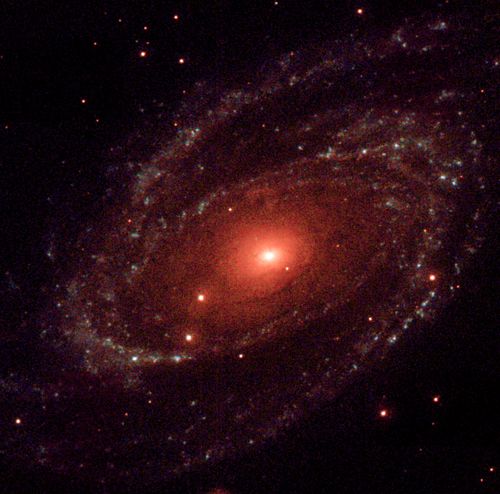Gotta watch those hyphens
Here’s a headline from The Daily Galaxy, a science feed from the Discovery Channel.
Galaxy Devouring Black Holes -1st Evidence Found
by Casey Kazan Daily Galaxy Editorial Staff
Galaxy-Devouring Black Holes -1st Evidence Found
The hyphen makes the two words into a compound adjective describing the black holes. Now we have the black holes doing the devouring. That’s a completely different meaning! If you don’t have enough cosmology under your belt to know already, go read the article. You should have no trouble figuring out which interpretation is intended.
The headline has two other errors. One is editorial, and I suspect Mr. Kazan didn’t write the headline, because the headline contains an unscientific exaggeration. Read the article and you will see the exaggeration. The other error involves the typography. I leave identifying both errors as an exercise for the reader. If you can identify both, pat yourself on the back. If you give up, make a comment and I’ll tell all.
Subscribe to this blog's RSS feed
Those little horizontal lines matter
We commonly use three little horizontal lines in English: the hyphen, the N-dash, and the M-dash. Some people say we use hyphens and dashes, but I prefer the increased precision of saying two dashes. They’re named for how wide they are, by the way; the width of a capital N or a capital M.
Everybody knows what a hyphen is. You use it for compounds (see the two preceding posts), and to divide a word at the end of a line if it doesn’t fit. And a few other minor places, such as in telephone and social security numbers. You get a hyphen by pressing the key just to the left of the equals sign on your keyboard. You get an identical symbol by pressing the minus key on the numeric keypad. Technically the minus sign and hyphen are different—the code sent by the keyboard to the computer is different for the two keys, and some fancy-dancy typesetting systems (Tex and BookMaster come to mind) distinguish between them. That’s probably more than you need to be told about hyphens.
N-dash. An N-dash is a little longer than a hyphen. Use it when you describe a range of values, such as when a store is open: 7–9. To get an N-dash: hold the Alt key down while you type 0150 on the numeric keypad, then release the Alt key. Use an N-dash, and you class up your document, and your readers won’t even know what hit them.
M-dash. An M-dash is a little longer than an N-dash. Use an M-dash to show a break in thought. In the olden days you got the equivalent of an M-dash by typing two hyphens in a row, but you can get a real M-dash with the Alt-key trick, only you type 0151 instead of 0150. Use of M-dashes is a handy indicator of sophistication in typography, and they make your writing easier to understand.
Here’s a hyphen, an N-dash, and an M-dash: -, –, —. Easy to tell the difference, eh? (I’m feeling Canadian right now.)
All this discussion leads to a gaffe in a recent headline in an article published by Ziff-Davis, of all people, that beautifully demonstrates the importance of using the correct punctuation mark. Here’s the headline:
Google Voice-Free Calling Has Arrived
Now, doesn’t that look like some way to make a call without using your voice? Read the article, however, and you discover that Google Voice is a way to make a call for free—a much different meaning, and one that certainly makes more sense. They should have written “Google Voice—Free Calling Has Arrived.”
If you want people to understand you, remember that a hyphen ties things together, an M-dash separates them.
Care to quibble or add to these short lists of what each mark does? Comment. Want to learn more about writing clearly? Get the free document on the right.

